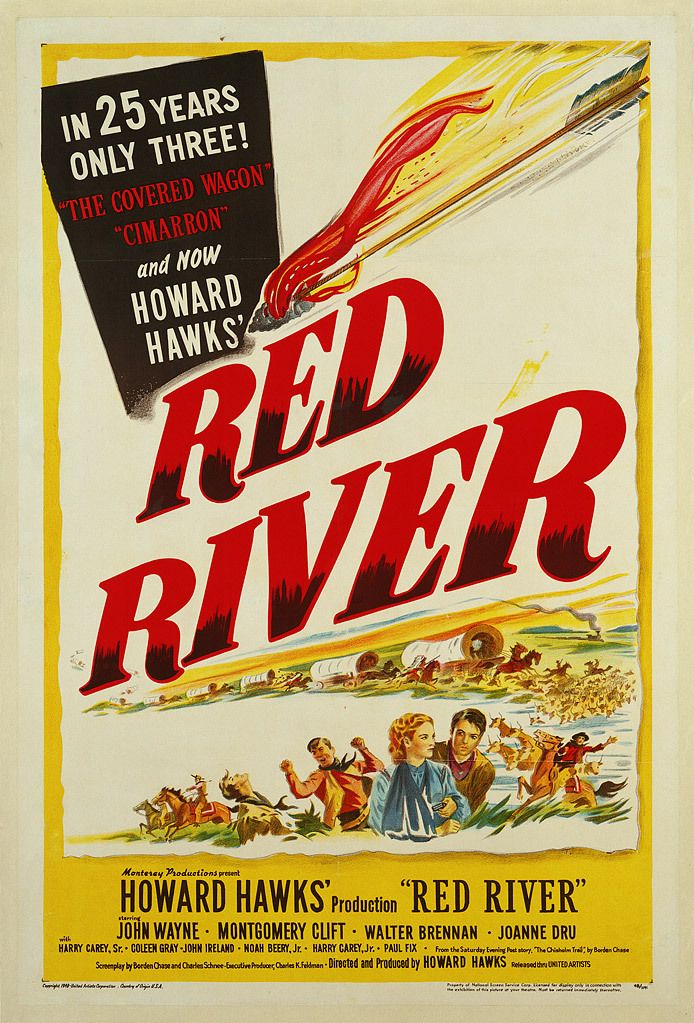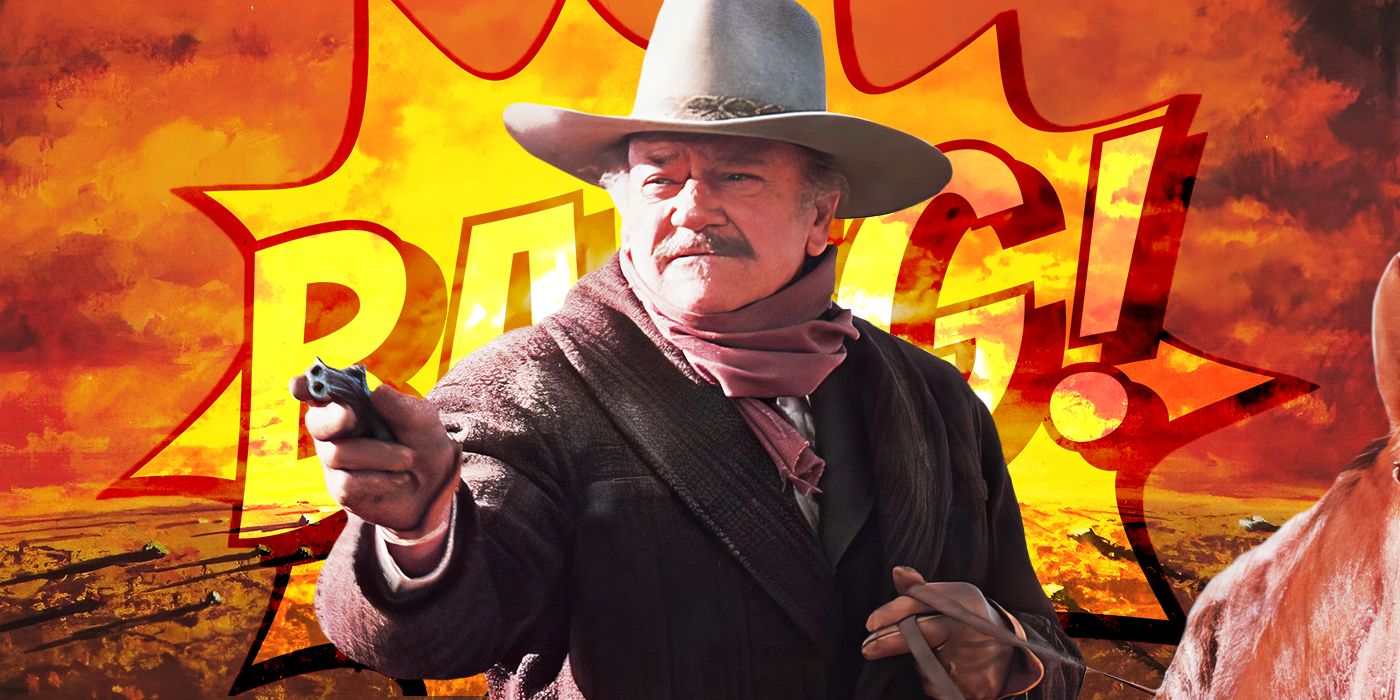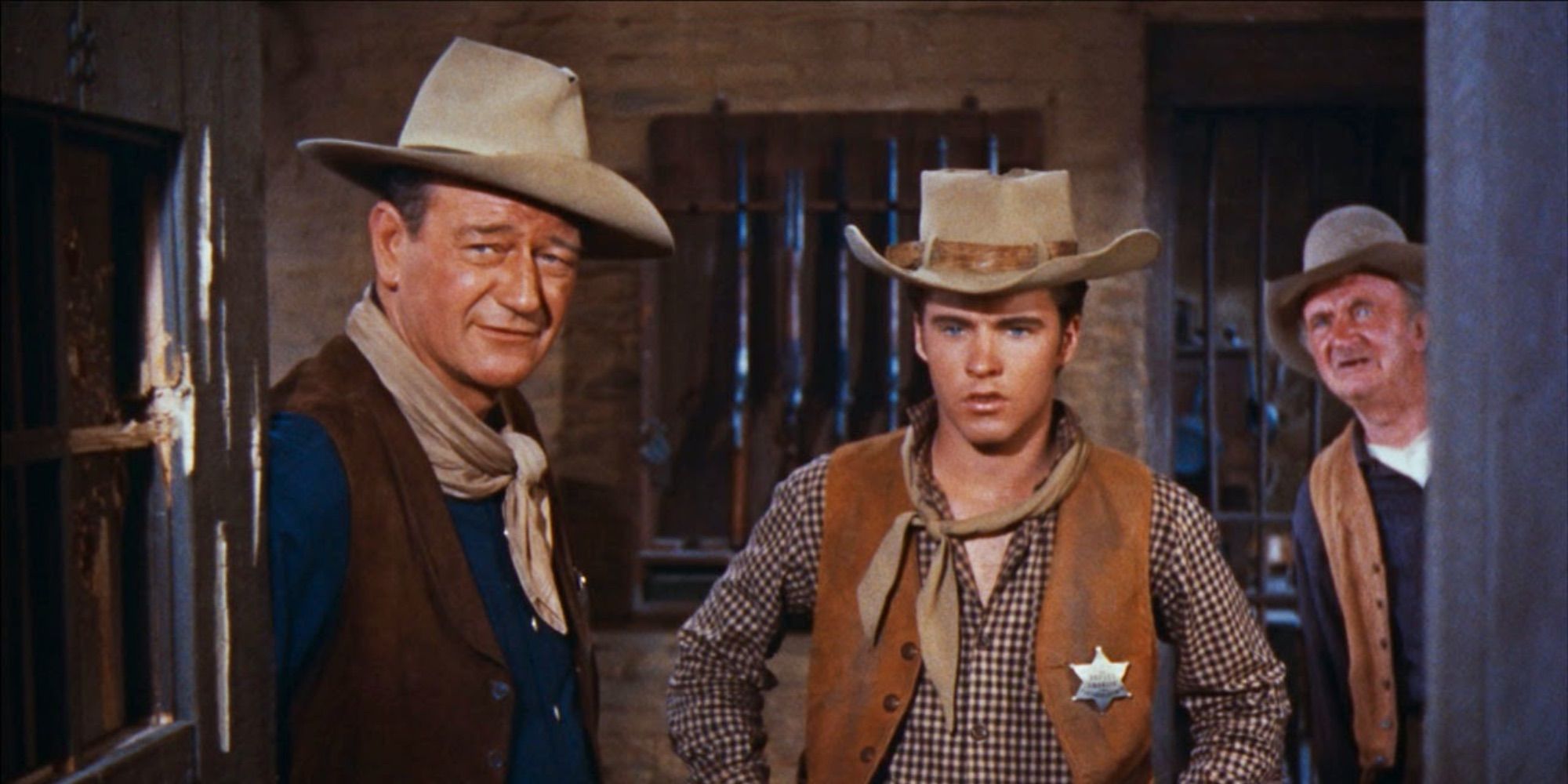If Howard Hughes had his way, we wouldn’t have this classic.
The Big Picture
- John Wayne’s role as a villain in
Red River
was a sharp contrast to his other roles at the time and showcased Howard Hawks’ darker intentions. - The dispute between Hawks and Howard Hughes resulted in a change to the film’s iconic ending, simplifying the story and cutting out some complex elements.
- Despite the legal battle,
Red River
became a classic Western, differentiating itself by its emotional resolution and exploration of toxic masculinity.
Although John Wayne starred in many of the greatest Westerns of all time, Howard Hawks’ 1948 epic Red River stands chief among them. Although Red River featured stunning visuals that made it enthralling on an aesthetic level, the film was significant because of its darker analysis of capitalistic greed, toxic masculinity, and the inherent violence within the American West. Red River allowed Wayne to play a villain, which came as a sharp contrast with the other roles he had at the time. While Red River can still be enjoyed as a traditional Western adventure, Hawks’ darker intentions are made clear by the time the film reaches its conclusion. However, Red River’s now iconic ending was the result of a dispute between Hawks and Howard Hughes.

Red River
Dunson leads a cattle drive, the culmination of over 14 years of work, to its destination in Missouri. But his tyrannical behavior along the way causes a mutiny, led by his adopted son.
- Release Date
- September 7, 1948
- Director
- Howard Hawks , Arthur Rosson
- Cast
- John Wayne , Montgomery Clift , Joanne Dru , Walter Brennan , Coleen Gray
- Runtime
- 133 Minutes
- Main Genre
- Drama
- Writers
- Borden Chase , Charles Schnee
- Studio(s)
- Monterey Productions , Charles K. Feldman Group
Howard Hughes Accused Howard Hawks of Plagiarism
Hawks is one of the most significant Western directors, and Red River challenged preconceived notions about heroism with its subversive depiction of a major historical event. The film examines America’s first cattle drive through the perspective of the Texas rancher Thomas Dunson (Wayne) and the trail hand Nadine Groot (Walter Brennan), who launched an ambitious plan to travel from Texas to Kansas along the Chisholm Trail. Although Dunson’s lover Fen (Coleen Gray) is killed during a conflict with Native Americans during the journey, he discovers a young orphan named Matthew Garth that he decides to raise as his own. An adult Garth (Montgomery Clift) accompanies his adopted father and Groot on their mission, but trouble begins to emerge when Dunson becomes corrupted by greed.
Dunson becomes the story’s antagonist when the dispute over the cattle drive turns violent, putting him in conflict with Groot and Matt. The conflict between Dunson and Matt reaches its climax in the film’s final moments, in which they engage in a violent fistfight. However, Matt’s love interest Tess Millay (Joanne Dru) forces the two men to admit that they actually love each other in a scene with strong Oedipal allusions. In what becomes a strangely optimistic conclusion, Dunson advises Matt to marry Tess and absolves any conflict between them. While it serves as a perfectly ironic ending to a darker story, the scene sparked a conflict with Hughes.
Hughes felt that the ending was too similar to the 1943 Western film The Outlaw, which he and Hawks had worked on together. The film’s original cut had included an ongoing subplot featuring Matt’s conflict with the sharpshooter Cherry Valance (John Ireland), which added tension ahead of his duel with Dunson. Hughes was harboring his own animosity toward the director for walking off the set of The Outlaw, and sued Hawks for plagiarizing the ending for Red River, even threatening to have the movie indefinitely delayed. While Hughes’ complaints didn’t manage to bury Hawks’ career as they were intended to, they did force him to rethink the film’s final moments. The new ending removed some of the subplots and featured a narration from Brennan’s character that transitioned to the final duel. While the narration made it easier to translate Red River in overseas markets, it also simplified the story and cut out some of its more complex elements.
The ‘Red River’ Director’s Cut Changed the Ending
Hawks had prepared a 133-minute version of Red River that included transitional moments meant to resemble pages in a book. Although Hawkes also prepared a 127-minute cut to appease Hughes’ complaints, editor Christian Nyby preserved the pre-release version, which was used for television broadcasts and the film’s eventual home video release. Although it was considered to be lost, the original theatrical cut of Red River was restored by Janus Films for its 2014 Criterion release. While some director’s cuts are much longer than their original versions, the differences between the two versions of Red River only come down to a few scenes.

How John Wayne’s Western Movie Career Ended With a Bang
John Wayne’s final on-screen role brought his career as a Western legend full circle.
Although Hawks indicated in an interview in 1972 that he preferred the theatrical cut to the pre-release version, the revamped ending presents some logical errors. The narration included by Brennan summarized events that he hadn’t witnessed. Comparatively, the book inserts provided an objective perspective on what actually happened. Although the rushed lead-up to the final battle may have felt like a disappointment considering the realistic approach that the film had up until that point, it didn’t prevent Red River from becoming a classic. The film was named one of the greatest westerns of all-time by the AFI and earned Academy Award nominations for Best Film Editing and Best Writing, Motion Picture Story.
Regardless of the events that lead up to the ending, the emotional resolution to the final conflict betweenDunson and Matt differentiates Red River from other Westerns. The ending proves that even someone as ruthless as Dunson is capable of redemption, and acknowledges the affection that he has for Matt. Rather than treating the two characters’ newfound peacefulness as a gag, Hawks shows that both men regret having exemplified toxic traits. The heartfelt conclusion made Red River stand out compared to the Westerns Wayne made with director John Ford, which took a considerably darker approach to the material.
‘Red River’ Wasn’t Howard Hawks’ Only Classic Western
While the legal battle with Hughes made completing Red River a challenge, it thankfully didn’t dissuade Hawks from continuing his work within the Western genre. Hawks became one of Wayne’s most frequent collaborators and directed him to a career-defining performance in the classic “hangout western” Rio Bravo. Rio Bravo was made in direct response to the Gary Cooper western High Noon and has been cited as a favorite by filmmakers like Quentin Tarantino, John Carpenter, and Kenneth Branagh.
Although Hawks would go on to direct Wayne in the 1966 western El Dorado and its 1970 sequel El Lobo, Red River remains the most iconic of their collaborations. Although Wayne and Ford had revitalized the Western genre with their 1939 film Stagecoach, Red River proved that Westerns could engage with the darker aspects of American history. While the film would’ve been shelved completely if Hughes had his way, Red River has earned its reputation as a classic that still holds up today.
Red River is streaming on Prime Video in the U.S.
WATCH ON PRIME VIDEO
This article was originally published on collider.com



